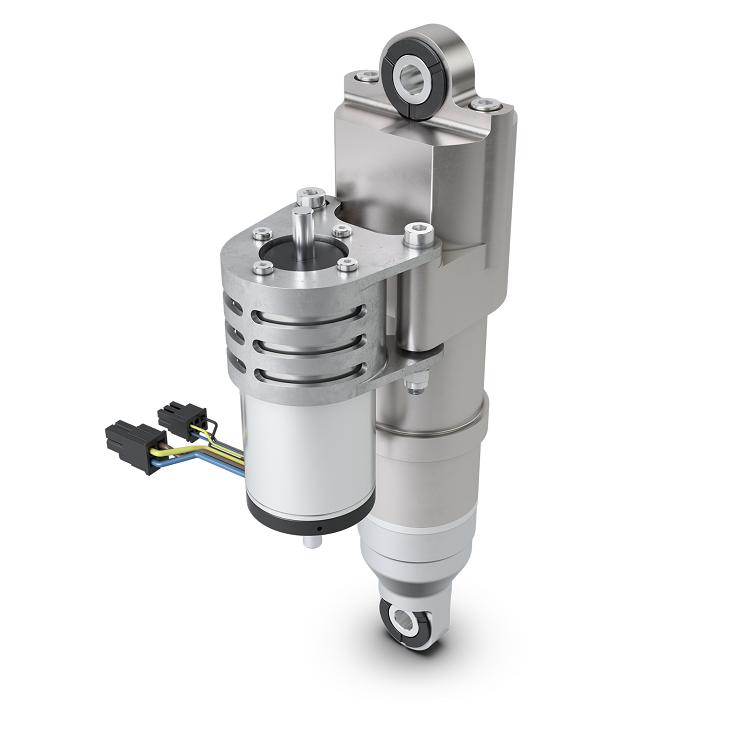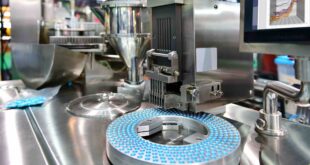Around 70% of global CO2 emissions are caused by the combustion of fossil fuels, with almost a quarter being emitted by the transport sector.
In order to achieve the ambitious Paris climate targets, new technologies in the powertrains of vehicles will therefore be required in the future.
However, it is not enough to restrict developments to highly efficient electric drives.
As a matter of fact, calculations carried out by Schaeffler show that almost 30% of newly manufactured passenger cars will be driven by purely electric powertrains by 2030.
Yet at the same time, another 40% of all new vehicles will be equipped with a hybrid drive, with the internal combustion engine and the transmission being its key components.
Even in more than 10 years’ time, cars that are powered purely by internal combustion engines will account for another 30% of the global market.

Schaeffler is expecting particularly strong market growth with regard to mild hybrid vehicles that are powered by a 48-Volt on-board electric subsystem.
In 2030, annual production of around 20 million units is expected for so-called P0 drives, in which the electric motor is connected to the crankshaft of the internal combustion engine via a belt.
This type of belt-driven starter generator makes it possible to recuperate a large proportion of the kinetic energy that is otherwise lost when braking.
A small and thus cost effective lithium-ion battery is used for energy storage.
Recuperated energy
The recuperated energy can be utilised for restarting the engine in start-stop or sailing mode, as well as for additional acceleration.
In order to ensure that operating modes can change dynamically, Schaeffler has developed new solutions for belt tensioners. The company is introducing an electrically-actuated active tensioner at the 11th Schaeffler Symposium.
48-Volt solutions will also increasingly be applied in other positions in hybridised powertrains in the years to come.
The objective here is to boost the electrical output to above 20kW and improve the overall efficiency and emission behaviour of drives further.
The arrangement of the 48-Volt electric motor on the crankshaft as a P1 hybrid module provides a ratio-free link to the internal combustion engine speed.
Recuperation and fuel-saving driving strategies are even more efficient with a P2 hybrid module on a 48-Volt basis that is fitted between the internal combustion engine and the transmission.
For front-transverse drives with a small axial design envelope, Schaeffler has developed a variant with an arrangement parallel to the axle that acts on the transmission input shaft via a belt or chain drive.
In addition to recuperating braking energy, this system allows electric driving at low speeds, such as in traffic jams and while parking and manoeuvring.
What is more, the 48-Volt hybrid module from Schaeffler assists in accelerating and fuel-saving sailing, which means that the vehicle rolls freely with the internal combustion engine switched off and decoupled from the drive train.
An integrated and automated clutch ensures a high level of comfort when restarting the vehicle by helping the engine to rev up immediately after it starts.
Furthermore, Schaeffler’s P2 modules allow cost-effective hybridisation of manual transmissions.
The potential for higher efficiency is not yet exhausted when it comes to conventional, non-electrified internal combustion engines.
For this reason, Schaeffler has developed switchable roller finger followers for cylinder deactivation in three-cylinder engines, which will be integrated into Ford’s volume-production vehicles.
What is more, Schaeffler has carried out tests on a test engine with rolling cylinder activation.
Rolling cylinder activation
In this design, the cylinders that are switched off continuously change: after every four strokes in normal operation, the cylinder is skipped for another four strokes.
The prototype has been equipped on the intake side with the UniAir fully variable valve train system and with switchable valve train components on the exhaust side, additionally allowing charge cycle losses to be reduced.
Presented for the first time at the Schaeffler Symposium, the result shows that, depending on the cycle, rolling cylinder deactivation allows the specific fuel consumption to be reduced by an additional two per cent compared with static deactivation without negatively affecting the engine’s emission behaviour.
Technologies for increased efficiency in transmission systems also play an important role at the Schaeffler Symposium.
The centrifugal pendulum-type absorber, for example, has proven to be very effective when it comes to damping torsional vibrations in the powertrain.
The trend towards active sailing, however, entails a critical operating point at which a conventional centrifugal pendulum-type absorber is no longer effective.
In order for the driver to accept the switching-off and restarting of the internal combustion engine, Schaeffler has developed a new couple pendulum, in which the dampers support each other via springs in a circumferential direction.
In addition, Schaeffler has developed a new design for transmission bearings with particularly low friction, which are called ‘angular roller units’ (ARU).
These are similar to tapered roller bearings and combine a high load carrying capacity and long rating life.
Unlike tapered roller bearings, however, they can absorb axial forces in two directions and can therefore be used as locating/non-locating bearings. This arrangement is characterised by low friction, thereby further increasing the efficiency of conventional powertrains.
 Engineer News Network The ultimate online news and information resource for today’s engineer
Engineer News Network The ultimate online news and information resource for today’s engineer


